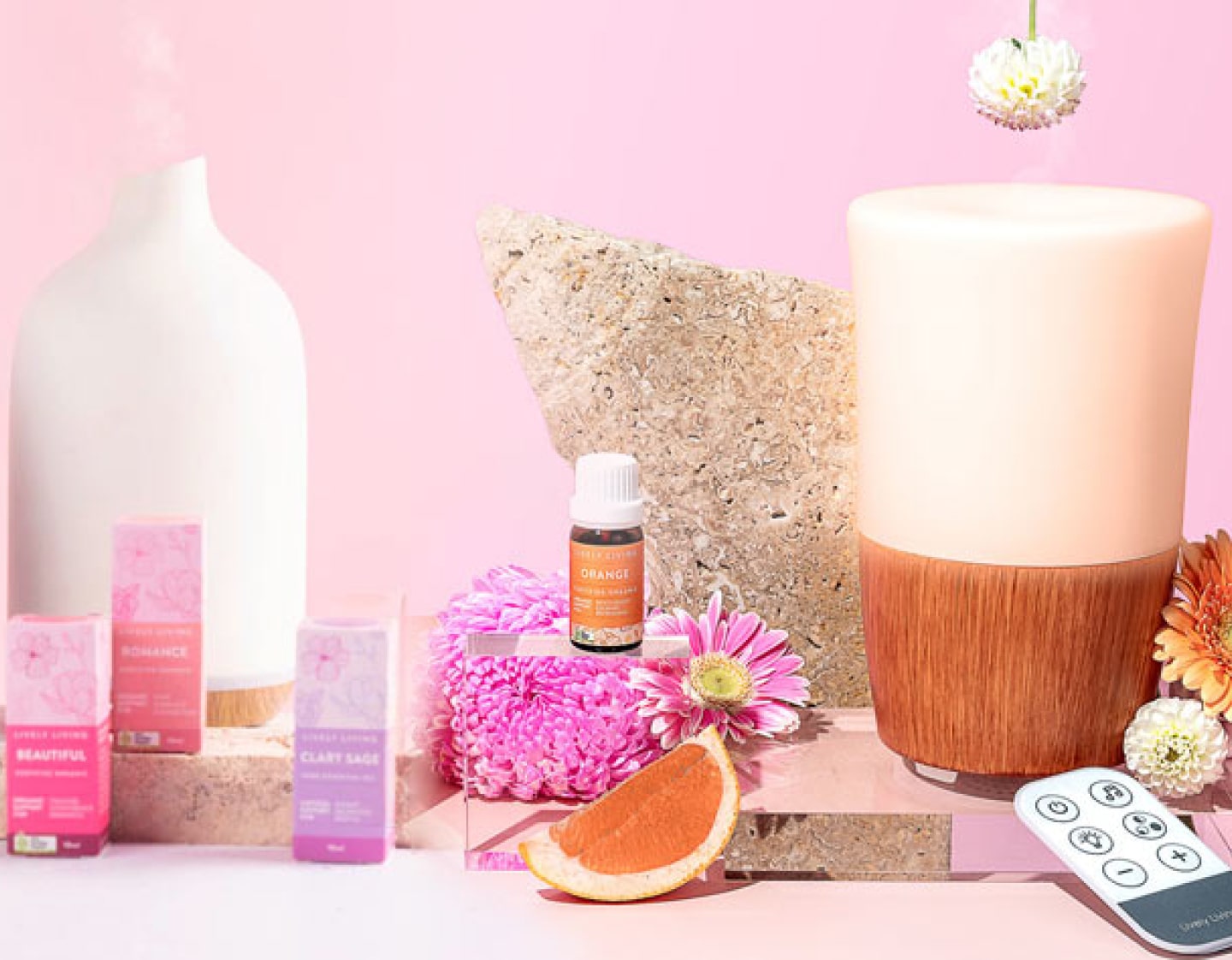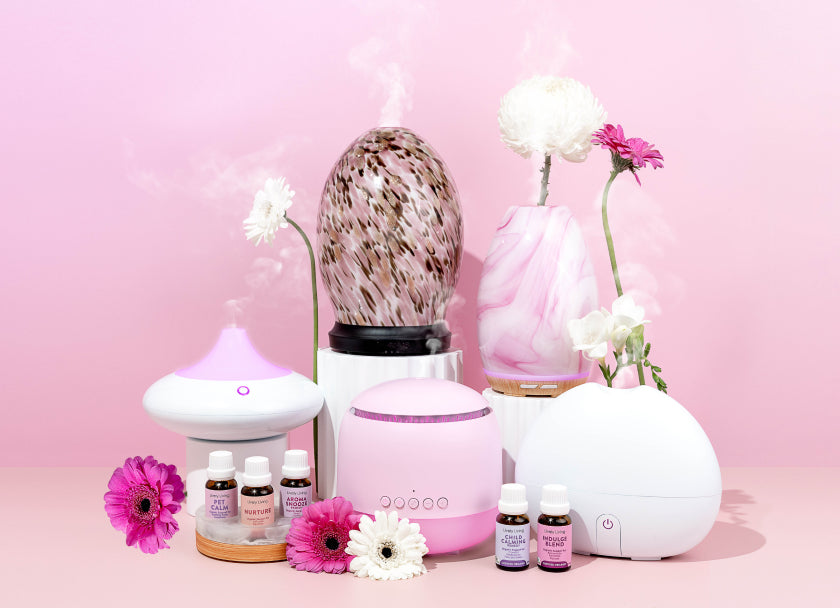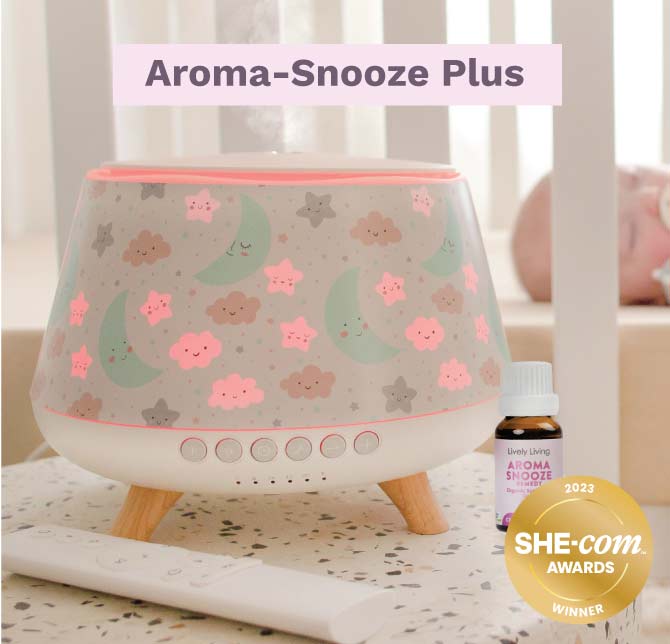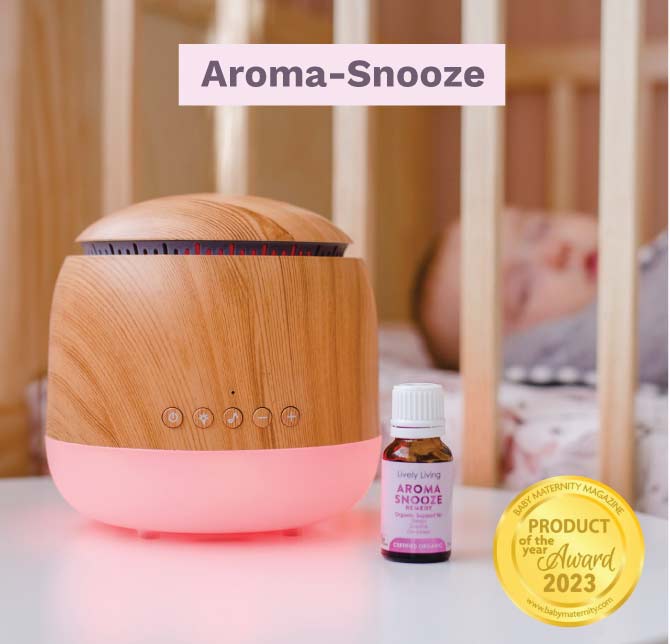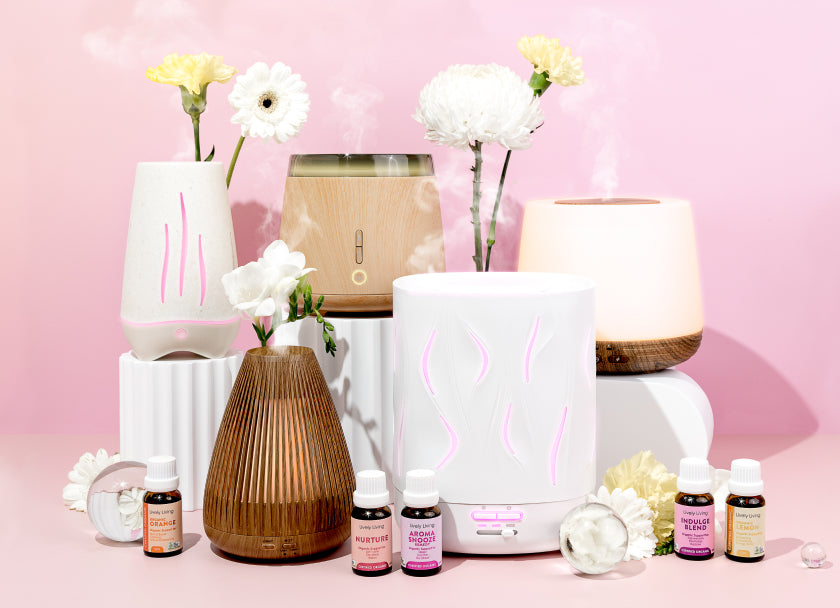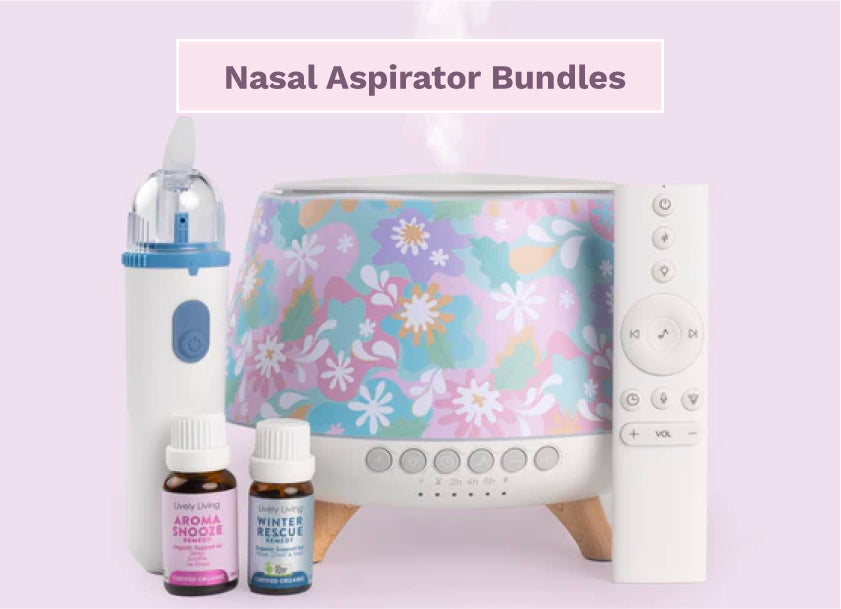Soothing Snotty Noses with Essential Oils: A Guide
Dealing with snotty noses is just plain annoying, isn't it? That constant drip or stuffiness can really drag you down. Almost everyone gets bogged down by snotty noses sometimes, especially during cold and flu season or allergy flare-ups.
But what's really going on up there? Understanding why your nose decides to turn into a leaky faucet can help you manage it better. Let's look at the common reasons and what you can do about it, particularly for young children.
Table of Contents:
- What Exactly Causes Snotty Noses?
- Understanding Snot Color - What Does It Mean?
- Dealing with Annoying Snotty Noses at Home
- When Snotty Noses Need a Doctor's Visit
- Snotty Noses in Children - Extra Tips
- Conclusion
What Exactly Causes Snotty Noses?
First off, mucus itself isn't bad. Your nose and sinuses produce it all the time, about a quart a day actually. This mucus acts like a protective blanket for your nasal passages.
It traps dust, pollen, bacteria, and viruses before they can get further into your system. It also keeps the sensitive tissues in your nose moist and functioning correctly. Normally, you swallow this mucus without even noticing.
But when something irritates your nasal passages or you get sick, mucus production ramps up significantly. Your body is trying to flush out the problem, whether it's a virus or an allergen. This extra mucus, mixed with immune cells and other debris, leads to that familiar runny or stuffy feeling of nasal congestion.
The Usual Suspects: Colds and Flu
The most common culprits behind sudden snotty noses are viruses. Hundreds of different viruses can cause the common cold. Rhinoviruses are frequently responsible for that less-than-pleasant experience of constant sniffing and blowing.
Influenza viruses cause the flu, which often comes with more intense symptoms than a typical cold, like fever and body aches. Both colds and flu trigger inflammation in your nasal passages. This inflammation leads your body to make more mucus to trap and expel the virus particles, resulting in runny noses.
This is why you might feel miserable and leaky for several days while your body fights off the infection. It's a common scenario for many Australian families, especially during winter.
Pesky Allergies
Maybe your snotty nose isn't from a virus at all. Allergies are another major cause of chronic runny noses. This happens when your immune system overreacts to harmless substances called allergens.
Common triggers include pollen (leading to hay fever), dust mites hiding in carpets and bedding, pet dander from cats and dogs, and mold spores thriving in damp areas. Your body releases histamine and other chemicals when exposed to an allergen. This causes sneezing, itching, and yes, a very runny nose, often with clear, watery mucus – a condition called allergic rhinitis.
Managing allergies often involves identifying triggers and avoiding them, or using antihistamines and nasal sprays for relief.
Sinus Infections Making Things Worse
Sometimes, a lingering cold or a severe allergy attack can lead to a sinus infection, also known as sinusitis. This occurs when your nasal passages become inflamed and swollen. This swelling can trap mucus in your sinuses, those air-filled pockets around your nose, forehead, and eyes.
Trapped mucus creates a warm, moist environment where germs can thrive. While viruses usually cause the initial inflammation, bacteria can sometimes join the party, leading to a bacterial sinus infection. Symptoms often include thick, colored nasal discharge (yellow or green), facial pressure or pain, headache, and sometimes fever.
If symptoms worsen or don't improve after 10 days, seeing a doctor is important.
Other Irritants and Factors
Viruses and allergies aren't the only triggers for a faucet-like nose. Environmental irritants play a significant role too. Things like tobacco smoke, smog, chemical fumes from cleaning products, and even strong perfumes can irritate your nasal lining.
This irritation prompts your nose to produce extra mucus as a protective measure. Even changes in weather, particularly exposure to cold, dry air, can stimulate mucus production temporarily. And ever notice your nose runs when you cry? That's a natural process because tears drain through tear ducts located in the inner corner of your eyes, emptying directly into your nasal cavity.
Hormonal changes, certain foods, and some medications can also contribute to non-allergic rhinitis for some people.
Understanding Snot Color - What Does It Mean?
You've probably noticed your snot changes color sometimes, from clear to white, yellow, or even green. While doctors don't rely solely on mucus color for diagnosis, it can offer some general clues about what's happening inside your nose. The color mostly reflects the presence and concentration of immune cells fighting an infection.
Let's break down the rainbow of possibilities and what they might indicate.
Clear Mucus
This is generally the normal state of affairs. Clear, watery mucus is usually healthy. It's composed mainly of water, proteins, antibodies, and dissolved salts, all working to keep your nasal passages clean and moist.
You might notice an increase in clear, runny mucus if you have allergies (like hay fever during pollen season). It can also show up at the very beginning of a viral infection, like the common cold, before your immune response fully kicks in.
White or Cloudy Mucus
Feeling stuffy and noticing your snot has turned white or cloudy? This often happens early in a cold or when congestion starts setting in. The nasal tissues become swollen and inflamed, slowing the flow of mucus.
This slow movement causes the mucus to lose moisture, becoming thicker and cloudier. The cloudiness can also come from a higher concentration of immune cells starting to gather to fight off whatever is causing the irritation.
Yellow or Green Mucus
This is the color transition that often makes people wonder if they need antibiotics. Yellow or green snot indicates your immune system is actively fighting an infection. The distinct color comes primarily from dead white blood cells, specifically neutrophils, which are front-line soldiers in your immune army.
These neutrophils contain an iron-rich, greenish enzyme called myeloperoxidase. When large numbers of these cells die after engulfing pathogens, they release this enzyme, turning the mucus yellow or green. Importantly, green or yellow mucus does not automatically mean you have a bacterial infection needing antibiotics; viruses commonly cause this color change too as your body mounts a strong defense.
The color simply shows your immune system is working hard.
Here's a simple guide, but remember, it's just a general reference and not a substitute for medical advice:
| Mucus Color | Possible Meaning |
|---|---|
| Clear | Normal, Allergies, Early Cold/Flu |
| White/Cloudy | Congestion starting, Mild Infection/Inflammation |
| Yellow/Green | Immune system fighting infection (Viral or Bacterial). |
| Pink/Red/Orange/Brown | Presence of Blood (Dryness, Irritation, Injury). |
| Black | Fungal Infection (rare), Smoking, Heavy Pollution, Drug Use. |
Other Colors to Note
Seeing pink, red, orange, or brown hues in your mucus suggests that blood is mixed in. This usually happens because the delicate tissues lining the inside of your nose are dry, irritated, or slightly injured. Frequent or forceful nose blowing is a common cause.
A little bit of blood is typically not a major concern, especially in dry climates or during an illness. However, if you experience frequent nosebleeds or notice a significant amount of blood, it's worth checking with your doctor.
Black mucus is much less common and potentially more serious. It could point to a fungal sinus infection, which is rare but more likely in people with weakened immune systems. It can also occur in heavy smokers, individuals exposed to significant air pollution or certain types of industrial dust (like coal miners), or sometimes from snorting drugs.
If you notice black mucus, or persistent blood in your snot, schedule a visit with your doctor to determine the cause.
Dealing with Annoying Snotty Noses at Home
Okay, so your nose is running wild or completely blocked. What can you actually do to feel better without immediately rushing to the doctor? Thankfully, several simple and effective home remedies can help manage those frustrating snotty noses and related nasal congestion.
These strategies focus on thinning the mucus, soothing irritated nasal passages, promoting drainage, and supporting your body's natural healing process. Many parents find these methods help their young children breathe easier.
Stay Hydrated
This is always good advice, but it's especially important when you're dealing with excess mucus production. Drinking plenty of fluids helps thin the mucus in your nasal passages, sinuses, and throat. Thinner mucus is significantly easier for your body to clear out, preventing build-up and reducing stuffiness.
Water is always the best choice. Warm liquids like clear broth, herbal teas (like chamomile or ginger), or even just hot water with lemon can be particularly soothing. They provide hydration and the warmth can help loosen congestion.
Try to avoid sugary sodas, excessive fruit juice, and too much caffeine, as these can sometimes be dehydrating or potentially worsen inflammation.
Get Plenty of Rest
If your snotty nose is a symptom of a cold, flu, or other infection, your body needs adequate energy to fight it off. Rest is crucial for recovery and allows your immune system to function optimally. Trying to push through your daily routine when you're sick can prolong your illness and make you feel worse.
Allow yourself to slow down, take naps if needed, and aim for a full night's sleep. Reducing stress and conserving energy helps your body focus on healing. Creating a restful environment can also make the recovery period more comfortable.
Add Humidity to the Air
Dry air, common during winter months or in air-conditioned environments, can irritate your nasal passages and cause mucus to become thick and sticky. Using a humidifier or a cool-mist vaporizer adds essential moisture back into the air you breathe. This can help soothe inflamed nasal tissues and effectively loosen congestion, making it easier to clear your nose.
Consider using a device like the Hush Vaporiser, known for its quiet operation, making it suitable for bedrooms. Taking a steamy shower or bath has a similar temporary effect; breathing in the warm, moist air can offer immediate relief from stuffiness. Remember to clean humidifiers regularly according to manufacturer instructions to prevent the growth of mold or bacteria.
Try Saline Sprays or Rinses
Over-the-counter saline nasal sprays are simply a sterile mixture of salt and water. They work by moisturizing dry nasal passages and helping to thin thick mucus. Saline sprays are generally safe for all ages and can be used frequently throughout the day for gentle relief.
Nasal rinsing devices, such as neti pots or sinus rinse squeeze bottles, go a step further by actively flushing out mucus, allergens, dust, and other irritants from your nasal cavity and sinuses. Many find this provides significant relief from congestion and pressure. It is absolutely critical to use only distilled, sterile, or previously boiled and cooled water for nasal rinsing to avoid the risk of introducing dangerous microorganisms.
Use Warm Compresses
If your runny or stuffy nose is accompanied by sinus pressure or facial pain, applying a warm compress might provide comfort. Soak a clean washcloth in warm (not hot) water, wring it out, and place it gently over your forehead, nose, and cheeks. The warmth can help ease pain, reduce pressure, and potentially encourage sinus drainage.
Repeat as needed, reheating the cloth when it cools. This simple remedy can be surprisingly soothing when you're feeling congested and uncomfortable.
Keep Your Head Elevated
When you lie flat, mucus tends to pool in your nasal passages and sinuses, which can worsen feelings of congestion and make breathing difficult, especially at night. Try sleeping or resting with your head elevated on an extra pillow or two. Using gravity this way can help promote sinus drainage and make it easier to breathe.
This is particularly helpful for children struggling with nighttime congestion. Ensuring they can breathe easier promotes better sleep, which is vital for recovery.
Blow Your Nose Gently
It's a natural instinct to blow your nose forcefully when you feel really congested. However, blowing too hard can actually irritate the delicate lining of your nasal passages further, potentially causing swelling or minor bleeding. Aggressive blowing might even push mucus containing germs back into your ear canals (risking ear infections) or deeper into your sinuses.
The recommended technique is to press a finger over one nostril and blow gently out of the other into a tissue. Alternate sides and repeat as needed. Always wash your hands thoroughly with soap and water afterward to prevent spreading germs.
Consider Natural Relief Options
Some people find additional comfort using natural topical rubs. Products like Breathe Butter, often containing gentle essential oil blends, can be applied to the chest or back. The soothing vapors may help create a feeling of easier breathing, contributing to overall comfort, especially at bedtime.
Using an essential oil diffuser with calming scents like lavender or chamomile (or just plain water for humidity) can also contribute to a more relaxing environment. However, be cautious with essential oils, especially around young children and pets, and ensure they don't irritate sensitive noses.
When Snotty Noses Need a Doctor's Visit
Most cases of snotty noses, especially those caused by the common cold, will resolve on their own within a week or two with simple home care. They are often just a normal sign that your body is fighting off an intruder. But sometimes, a persistent, severe, or unusual runny nose warrants a visit to a healthcare professional.
Knowing the signs that indicate your symptoms might be more than just a simple cold or allergy flare-up is important for getting timely and appropriate care. Don't hesitate to call your doctor if you're concerned about your own or your child's symptoms.
Watch for These Warning Signs
Here are some indicators that your snotty nose might be part of a more significant issue requiring medical evaluation:
- Symptoms Persist or Worsen: If cold-like symptoms (runny nose, cough, nasal congestion) last for more than 10 to 14 days without showing any improvement, or if they initially improve but then suddenly get worse, see a doctor. This pattern could indicate a secondary bacterial infection like sinusitis or bronchitis.
- High or Prolonged Fever: While a low-grade fever can accompany colds, a persistent high fever should be evaluated. For adults, a fever over 103°F (39.4°C), or any fever lasting more than a few days, warrants medical attention. Fever guidelines differ for children based on age; consult your pediatrician.
- Severe Symptoms: Seek prompt medical help if you experience intense headache, severe facial pain or swelling (especially if concentrated on one side), a stiff neck, unusual drowsiness, confusion, or blurred vision.
- Breathing Difficulties: Any shortness of breath, wheezing, rapid breathing, or pain when breathing requires immediate medical attention. This is especially crucial for infants and young children.
- Signs of Serious Infection: Thick yellow or green nasal discharge accompanied by high fever, severe sinus pain, and feeling very unwell might suggest a bacterial infection that could benefit from antibiotics (though many sinus infections are viral).
- Recurring or Significant Blood in Mucus: While a little blood spotting from nasal irritation is common, frequent nosebleeds or coughing up significant amounts of blood needs investigation.
- Symptoms Primarily on One Side: Unilateral nasal blockage, discharge, or facial pain can sometimes indicate a structural issue or a more localized problem that needs checking.
- Signs of Dehydration: If illness prevents you or your child from keeping fluids down, watch for signs of dehydration like decreased urination, dark yellow urine, dizziness upon standing, dry mouth, or extreme thirst. Severe dehydration requires medical intervention.
This list isn't exhaustive. Always trust your instincts. If something feels seriously wrong or if you are worried, it's always best to consult a healthcare professional for an accurate diagnosis and appropriate care plan.
Snotty Noses in Children - Extra Tips
Kids, especially babies and toddlers, seem to have perpetually snotty noses, don't they? Their immune systems are still developing, making them more susceptible to viruses, and close contact at daycare or school means germs spread easily. Managing their congestion issues can make parents feel stressed, but there are effective strategies and tools available.
Seeing your little one uncomfortable with a blocked nose is tough, as it can interfere with feeding, sleeping, and general happiness. Finding the easiest solutions becomes a priority.
Clearing Tiny Noses Effectively
Babies and young toddlers haven't mastered the art of blowing their noses. This is where a good nasal aspirator becomes indispensable for clearing a blocked nose. A simple rubber bulb syringe can work, but many parents find a more effective solution is needed for stubborn mucus.
Using a few drops of saline spray or solution in each nostril first helps to loosen thick mucus, making it easier to remove. Then, use the aspirator to gently suction out the snot. Several types of baby nasal aspirators are available, from manual ones to a motorised nasal aspirator.
The Snotty Boss nasal aspirator is one such motorised nasal device that has gained cult status among many Australian families. Trusted creators often recommend parents invest in a quality premium aspirator. Learning to use any baby nasal aspirator safely is important to avoid irritating the delicate nasal lining; always follow the product instructions.
Teaching Nose Blowing Skills
Once children are around age 2 or 3, you can start teaching them the useful life skill of blowing their nose. Turn it into a game to make it less intimidating. Practice having them blow air out of their nose (not their mouth) to move a tissue or cotton ball across a table.
Show them how to close one nostril while gently blowing out the other. Remind them repeatedly to blow gently rather than forcefully. Patience and positive reinforcement are key.
Mastering Handwashing Habits
Frequent and proper handwashing is one of the most effective ways to prevent the spread of germs that cause colds and lead to snotty noses. Teach kids to wash their hands thoroughly with soap and water for at least 20 seconds (the time it takes to sing 'Happy Birthday' twice). Emphasize washing after blowing their nose, coughing, sneezing, using the bathroom, and before eating.
Model good handwashing habits yourself. Making it a consistent routine helps protect the whole family.
Prioritizing Hydration and Comfort
Just like adults, keeping children well-hydrated is crucial when they are sick and congested. Offer plenty of fluids like water, diluted juice, clear broths, or electrolyte ice pops if they have a poor appetite. Adequate hydration helps thin mucus, making it easier for them to clear their nose or for you to suction it.
Ensure they get ample rest to help their bodies fight the infection. Using a cool-mist humidifier, like the Hush Vaporiser, in their bedroom at night can help keep the air moist, soothe irritated airways, and potentially improve sleep quality. Some parents also use sleep aid devices like 'sheep sleep' sound machines to create a calming environment.
Shopping for Baby's Health Needs
When preparing for a baby or dealing with childhood illnesses, parents often look for reliable products. Items like a good nose aspirator (perhaps the go-to premium aspirator, the Snotty Boss nasal), saline spray, a thermometer, and perhaps even a gentle baby nail trimmer like the Nail Snail baby nail trimmer are essentials. These products support baby's health and make parents' lives easier.
You can find these items at various baby stores, pharmacies like Terry White Pharmacy or Chemist Warehouse (including the Chemist Warehouse online marketplace), or other retailers like Baby Bunting. Looking for bundles or deals, perhaps around a baby shower, can be helpful. Some online marketplaces may offer free shipping.
When to Keep Them Home from Care
Deciding whether to send a sniffly child to school or daycare can be a tough call. Generally, it's recommended to keep kids home if they have a fever, are showing signs of significant discomfort or fatigue that would prevent them from participating in activities, or require more care than the staff can reasonably provide. Check your specific school or childcare center's illness policy.
Always consult your pediatrician if you are worried about your child's symptoms, especially if they have a high fever, difficulty breathing, seem unusually lethargic or irritable, or if the congested baby instantly seems worse. Getting professional advice provides peace of mind and ensures your child receives the right care.
Conclusion
While certainly bothersome and sometimes messy, most snotty noses are simply a temporary inconvenience, often caused by common colds, seasonal allergies, or environmental irritants. Understanding the common causes and what the changing colors of mucus might indicate can help demystify the experience and reduce worry. Implementing simple home care strategies like staying well-hydrated, getting sufficient rest, using saline rinses or sprays, and adding humidity to the air often provides enough relief to get through the drippy, stuffy periods.
For parents dealing with a sick congested baby, tools like a quality baby nasal aspirator (maybe even a motorised nasal aspirator) can be invaluable to help their little one breathe easier and sleep better. Remember essential comfort measures and hygiene practices.
It's also important to recognize warning signs that might suggest something more serious than a simple cold, such as a persistent high fever, severe pain, difficulty breathing, or symptoms lasting beyond two weeks without improvement. Don't hesitate to seek medical advice from your doctor or pediatrician if you have concerns about your snotty noses or your child's health. With a little care, patience, and the right approach, you'll navigate these common respiratory troubles effectively.

